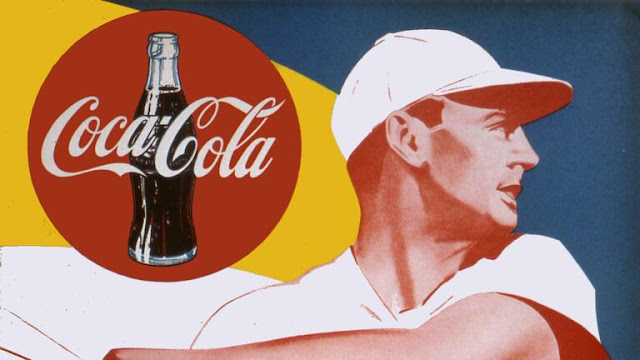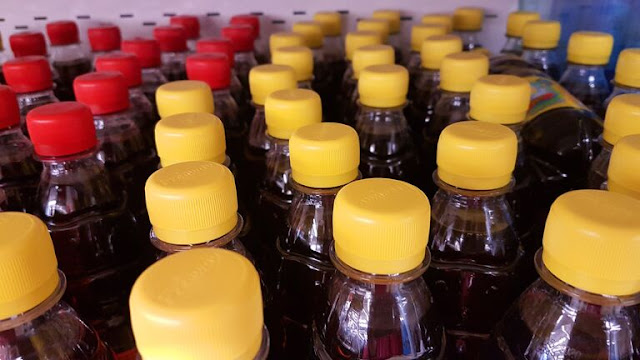[page1]
Other colored lids.
You might be wondering why yellows are so special. In fact, caps often indicate the taste of the drink. For example, a beige cap on a Coca-Cola bottle means the drink tastes like vanilla. However, this is not true for yellow caps - they don't signify anything about the flavor of the soda. What's up with that?
Click Next Page to see more.
[/page1]
[page2]
They are not sold all year round.
You cannot find these different types of bottles everywhere—they only exist for a specific time frame. Yellow caps showed up in grocery stores during the springtime months. Since they are unavailable for too long, they are pretty special. So be attentive and keep your eyes peeled. Maybe you'll see one in person! We suspect you're asking yourself: if yellow caps don't represent the taste of the drink, then what exactly do they signify?
[/page2]
[page3]
The rest is the same.
This only means one thing - there are no other changes to watch out for. Everything else looks the same, from the colors on the label to the famous logo. It's just a regular Coke bottle (except with a yellow cap). Now that we know that everything inside of it is also unchanged, maybe we should ask ourselves why they changed these Coca-Cola bottles' caps.
[/page3]
[page4]
The Classic Look.
How did the classic Coca-Cola look come about? To answer this question, we must go back a century to 1886, when John S. Pemberton first mixed the ingredients of Coca-Cola. Today the drink is famous and enjoyed by many people worldwide, but in 1886 it was just an untested new drink made by Pemberton. He didn't even have a name yet; at that time, it was just a sweet and bubbly concoction with no name.
[/page4]
[page5]
Coke
This situation quickly changed when Pemberton's financial advisors distributed the Pearl of Wisdom (a publication detailing his drink). Frank M. Robinson went down in history as the man who created Coca-Cola. Now it's gone gold, which is excellent! But how did he find this name? What was his inspiration behind this? He might never have guessed that he would become such a household name in the world.
[/page5]
[page6]
The welcoming logo.
According to the Coca-Cola website, Robinson explained, Those two C's look good in my advertisement. I'm not surprised. Well, he isn't wrong. After naming the drink, he also designed what would become an internationally recognizable Coca-Cola logo - which became a trademark in 1893. Though there were times when its design underwent some minor alterations, most of them are still recognizable today. Robinson had already put pen to paper that day - so now it has been around for over 100 years!
It's still here a century later. We all want to know how Pemberton or Robinson would react if told that what they created will still exist about 100 years after it was made.
It's still here a century later. We all want to know how Pemberton or Robinson would react if told that what they created will still exist about 100 years after it was made.
[/page6]
[page7]
Ads in Wall Painting.
Coca-Cola used murals to advertise the drink. Despite challenges, one thing was sure--the beverage had a clear understanding of who they were and what its product stood for. The painted mural features red paint covering the background with white text smack dab in the middle of all the action.
[/page7]
[page8]
For taxes.
In a 2018 interview with Business Insider, a company spokesperson said, Around the 1890s, we started painting barrels red so inspectors could tell them apart from alcohol when testing. Dispatch.
Since then, the same color has always existed.
[/page8]
[page9]
It's not just any shade of red
In fact, the red we can see in Coca-Cola products these days is made up of three different shades.
The end result wasn't even officially registered in design guides, so if you want to paint a room coca red, you will have to do some research.
[/page9]
[page10]
A color that catches people's attention.
That way, we can understand why the yellow hats stand out. They clash with the bright blue background and draw everyone's attention away from all other aspects of the ad. Coca-Cola probably doesn't need to worry about them either.
[/page10]
[page11]
Colored cans.
At the very least, the bright yellow wouldn't clash with the seven-colored cans released by Coca-Cola's branch in the South Pacific back in 2014. For a short time, halfway around the world, there were ColaTM*cans painted in five different colors: green, blue, purple, orange, and pink. So you can see that yellow isn't so weird next to these other five colors.
[/page11]
[page12]
A Vibration.
Angeline Lee, brand manager for Coca-Cola, says design-wise, we were cautious about maintaining the Coca-Cola style. She goes on to say, These cans really need to jump off the shelf! Apparently, the beverage giant wants to attract people to the southern pacific region. We believe they have achieved this with excellence because of their bold colors, which are different from the red and white typically seen.
[/page12]
[page13]
Colors that fascinate us.
The soda cans definitely drew my eye. The red Coca-Cola can still be available for purchase, but it seemed to fade from view next to the bolder colors sold - or even pique my interest.
[/page13]
[page14]
It was a logistical nightmare
Gary Burke, the manager of Coca-Cola's Packaging Graphics Department, explained his company's dilemma. The biggest challenge we had was achieving diversity in our markets so that one store did not receive all green cans and another got all orange cans, he said. We wanted to experiment with mixing up different colors, while it is true that having an equal distribution of the 5 different colors (green, yellow, red, blue, and purple) would be ideal for stores.
[/page14]
[page15]
Easier said than done
Great ideas are worth pursuing, but they're not always easy to implement. Ensuring that stores would receive Coca-Cola cans of different colors may have seemed simple, but organizing it in practice proved difficult for the workers.
[/page15]
[page16]
An intense working process.
Managing Director Jacqui Rooney said: We decided to manually re-stack a pallet containing the cans. She continued, We had three palettes, each with two different colors. We removed one layer from each palette and rebuilt it manually. She explained that they probably had colored boxes on their heads for many nights and long after they finished the job. This laborious process is perhaps why the campaign was not made in the USA. Too bad, because we want to try Coke in a can of purple color.
[/page16]
[page17]
Other Status.
The situation of the yellow bottle cap is a little different from the one we just told you about. They are also limited, as are colored cans. However, compared to the formula used in regular Coca-Cola, there is a slight change in the drink's ingredients if it comes in a bottle with a yellow cap. The colored cap may not signify a specific flavor; however, this Coke has been brewed using slightly different methods than those that go into making black or red can drinks - at least according to some experts.
[/page17]
[page18]
Another type of sweeter.
Regular Coke uses high-fructose corn syrup, but the drink in yellow capped bottles does not. Instead, these drinks contain another kind of sweeter called sucrose - a substance derived from cane sugar and beet sugar. In theory, this might sound pretty random; however, there's a good reason why the company decided to swap out just one component while keeping everything else the same. And they did so with an eye on a specific group of people.
[/page18]
[page19]
A Jewish Holiday.
The change was made for people celebrating Passover. Every year during this time, corn syrup and some other foods are not on the menu and cannot be eaten. Sucrose isn't banned, though, meaning it's still possible for people celebrating Easter to enjoy a Coke.
[/page19]
[page20]
It's a kosher drink.
The yellow caps basically say this drink is kosher for Easter. (Hebrew term - Kosher)
Kosher means 'proper' when speaking of items that align with Jewish standards for food and beverages. Simply put, it's an indication of Judaism. If something isn't Kosher, then it isn't permitted during Passover.
[/page20]
[page21]
Confused
Things can get a little complicated sometimes. Foods and drinks deemed kosher outside of Easter may still be prohibited during the holiday season. Regular Coke is one such item that falls under this category. Indeed, the rules are much stricter sometimes - especially when it comes to vacations and celebrating Passover worldwide.
[/page21]
[page22]
It can't
So what are the restrictions for Jews on consuming food and drink on Passover? For starters, anything that falls under the category of chametz is forbidden. The Hebrew term refers to foods that contain grain-based ingredients, meaning anything made from oats, wheat, spelled (a type of ancient variety), barley or rye. All food and drinks containing these ingredients are prohibited. However, this list doesn't stop there, as other items cannot be consumed on Passover.
[/page22]
[page23]
Sem Chametz
Any food that rises during cooking is also prohibited. If, for example, there is a loaf of bread in the house, the occupants must clean up the traces of this bread before the Passover - to their last bread crumb. People who strictly follow Easter rules touch nothing that is considered chametz during the season. Coca-Cola knows this, so they decided to make a kosher version of the drink. In addition to chametz and kitniyot, many Jews are required to abstain from eating rice and beans during Passover due to being inedible raw but edible cooked.
[/page23]
Tags:
Interesting
























